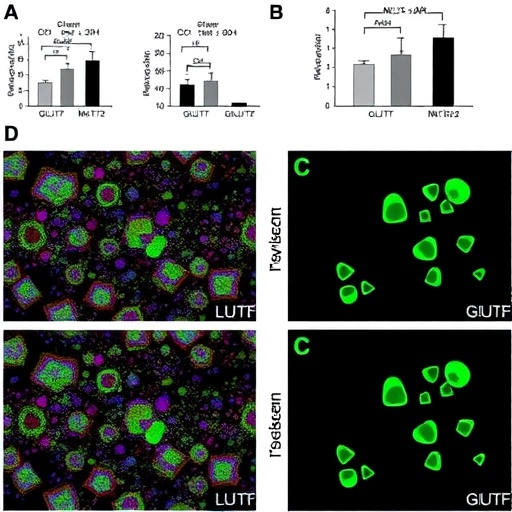In a groundbreaking advancement in the field of oncology, researchers have unveiled compelling evidence supporting bisabolol, a naturally occurring sesquiterpene alcohol, as a potent anticancer agent with multifaceted therapeutic applications. The study, recently published in Medical Oncology, delves deep into the molecular mechanisms underpinning bisabolol’s selective cytotoxicity against various cancer cell lines, shedding light on its promising role as a complementary treatment option in cancer therapeutics.
Bisabolol, predominantly extracted from the chamomile plant and certain other botanical sources, has been historically revered for its anti-inflammatory and antimicrobial properties. However, its potential as an anticancer compound has only recently garnered substantial scientific interest. The researchers conducted rigorous in vitro and in vivo analyses to unravel the complex biochemical interactions that bisabolol engages in within malignant cells, delineating pathways that could be exploited to induce apoptosis and impede tumor proliferation.
Central to bisabolol’s antineoplastic activity is its capacity to trigger programmed cell death selectively in cancer cells without inflicting collateral damage on healthy tissue. This selective cytotoxicity addresses one of the paramount challenges in oncology: minimizing systemic toxicity while maximizing therapeutic efficacy. The data reveal that bisabolol instigates mitochondrial-mediated apoptosis, activating caspase cascades that culminate in cancer cell demise. Such targeted induction of apoptosis is essential for controlling tumor growth and preventing metastasis.
Moreover, bisabolol’s inhibitory effect on key signaling pathways, notably the PI3K/Akt and NF-κB pathways, underscores its role in modulating intracellular survival signals that are often dysregulated in tumor cells. By attenuating these signaling axes, bisabolol disrupts cellular proliferation and enhances susceptibility to apoptosis. This mechanistic insight is vital for developing combinational therapies, where bisabolol could synergize with existing chemotherapeutic agents to overcome drug resistance.
Another significant finding of the research is bisabolol’s antioxidative properties, which contribute to its anticancer effects. Oxidative stress and the generation of reactive oxygen species (ROS) are known contributors to oncogenesis and tumor progression. Bisabolol’s ability to modulate the cellular redox environment by scavenging free radicals helps mitigate DNA damage and reduces the likelihood of malignant transformation in precancerous cells.
The pharmacokinetic profile of bisabolol also emerged as a focal point of the study. The compound exhibits favorable absorption and bioavailability, making it a viable candidate for systemic administration. Additionally, bisabolol’s lipophilic nature facilitates its penetration into tumor microenvironments, ensuring effective concentrations at the site of malignancy. These properties are critical for translating benchside findings into clinical applications.
In preclinical tumor models, bisabolol demonstrated significant tumor growth inhibition across a spectrum of cancers, including breast, prostate, and colon carcinomas. Animal studies revealed that bisabolol treatment resulted in decreased tumor volume and enhanced survival rates without notable adverse effects, highlighting its therapeutic window and safety profile. These outcomes pave the way for clinical trials aimed at evaluating bisabolol’s efficacy in human patients.
The molecular docking simulations included in the investigation provide structural insights into bisabolol’s interactions with various oncogenic proteins. Binding affinities suggest that bisabolol can interfere with receptor tyrosine kinases and transcription factors vital for cancer cell viability. Such interactions explicate the compound’s ability to stifle oncogenic cascades at a molecular level, reinforcing its status as a multitarget therapeutic agent.
Importantly, the study also addresses potential resistance mechanisms that could diminish bisabolol’s effectiveness. By analyzing gene expression patterns post-treatment, the researchers identified adaptive responses by tumor cells that could compromise therapeutic outcomes. This knowledge is instrumental for designing optimized treatment regimens, perhaps involving periodic dosage adjustments or combination with modulators that inhibit resistance pathways.
The therapeutic scope of bisabolol extends beyond monotherapy. Its capacity to sensitize cancer cells to radiation and chemotherapeutic drugs opens avenues for integrative oncology approaches. Enhancing the vulnerability of tumors to conventional treatments using bisabolol could revitalize therapies that have been limited by resistance or toxicity. This integrative strategy embodies the future of personalized cancer care.
From a translational research perspective, the synthesis of bisabolol derivatives with enhanced potency and selectivity is underway, aiming to improve its pharmacodynamic and pharmacokinetic characteristics. Medicinal chemistry efforts focusing on structure-activity relationships are expected to yield novel analogs with superior anticancer profiles, potentially broadening the therapeutic arsenal against aggressive malignancies.
The safety assessment of bisabolol in normal tissues underscores its benefit-risk ratio favorably. Unlike many cytotoxic agents that cause extensive collateral damage, bisabolol exhibits minimal genotoxicity and preserves the viability of non-cancerous cells. This attribute is essential for maintaining the quality of life in patients undergoing prolonged anticancer therapy.
Furthermore, the research highlights prospects for bisabolol’s application in chemoprevention. Individuals at high risk of developing certain cancers may benefit from bisabolol’s capacity to attenuate early oncogenic signals and suppress inflammatory microenvironments conducive to tumorigenesis. Such preventive interventions could represent a paradigm shift in oncology, moving the focus upstream in cancer control strategies.
Collectively, the study offers a comprehensive and nuanced understanding of bisabolol’s anticancer capabilities, framing it not merely as a botanical extract but as an emerging molecular scaffold in cancer pharmacotherapy. The integration of cellular, molecular, and preclinical data underscores the robust foundation supporting bisabolol’s advancement toward clinical translation.
As the scientific community continues to strive for novel, less toxic anticancer agents, bisabolol embodies the convergence of natural product research and molecular medicine. Its multifaceted mechanisms, favorable safety profile, and broad-spectrum activity position it at the forefront of next-generation oncologic therapeutics.
The anticipation surrounding ongoing and future clinical evaluations is palpable, with the potential to redefine standard treatment modalities and offer new hope to patients confronting the scourge of cancer. Bisabolol’s journey from an age-old herbal remedy to a sophisticated molecularly targeted agent exemplifies the transformative power of modern biomedical research.
In conclusion, bisabolol stands out as a natural compound with remarkable anticancer potential, promising to enrich the oncologist’s toolkit and alter the landscape of cancer treatment. Continued interdisciplinary research will be pivotal in harnessing its full therapeutic promise and actualizing its role in precision oncology.
Subject of Research: The anticancer properties and molecular mechanisms of bisabolol as a natural therapeutic agent in oncology
Article Title: Bisabolol as a natural anticancer agent: molecular insights and therapeutic potential in oncology
Article References:
Prasher, P., Sharma, M., Fatima, R. et al. Bisabolol as a natural anticancer agent: molecular insights and therapeutic potential in oncology. Med Oncol 42, 485 (2025). https://doi.org/10.1007/s12032-025-03005-8
Image Credits: AI Generated




